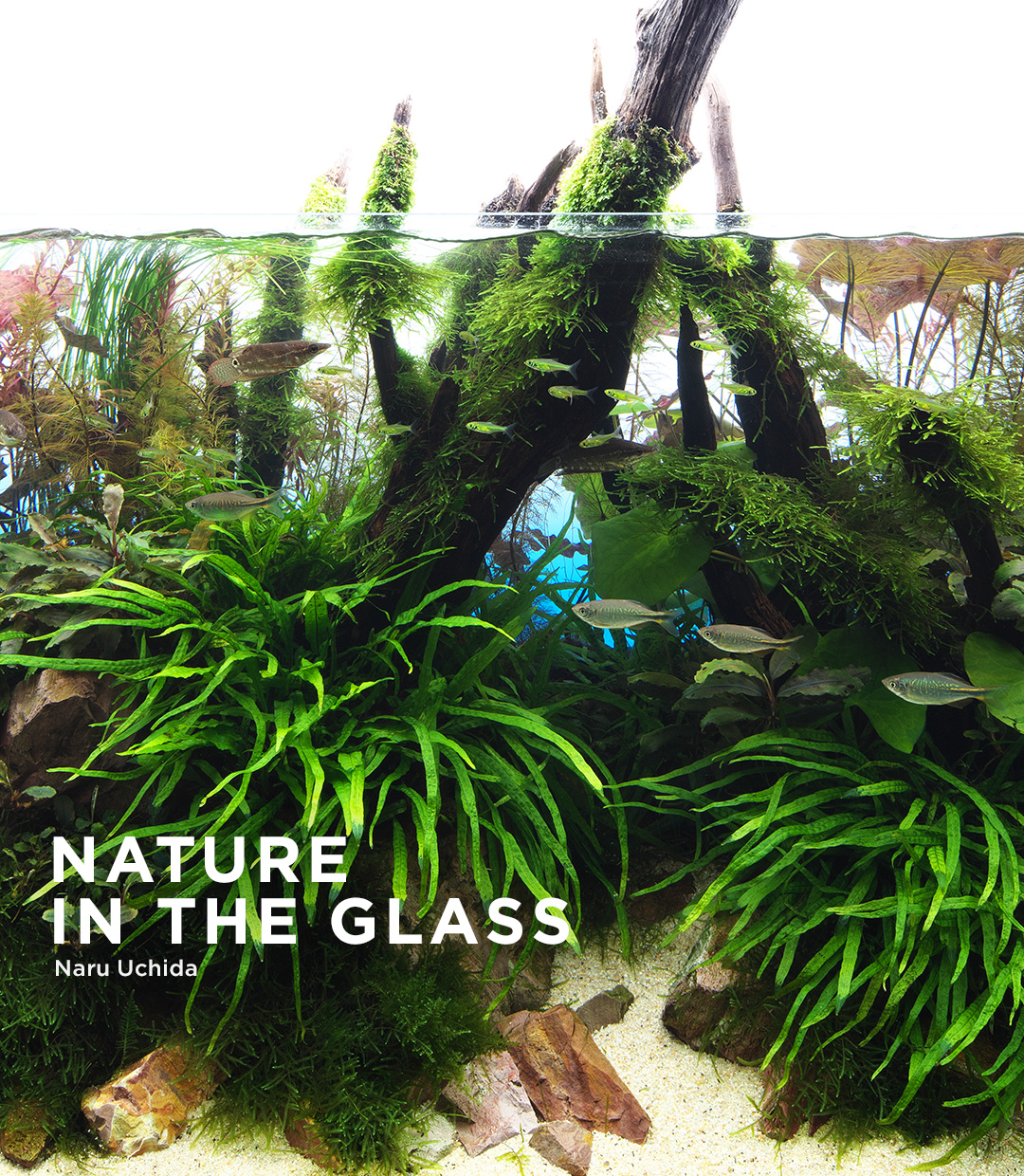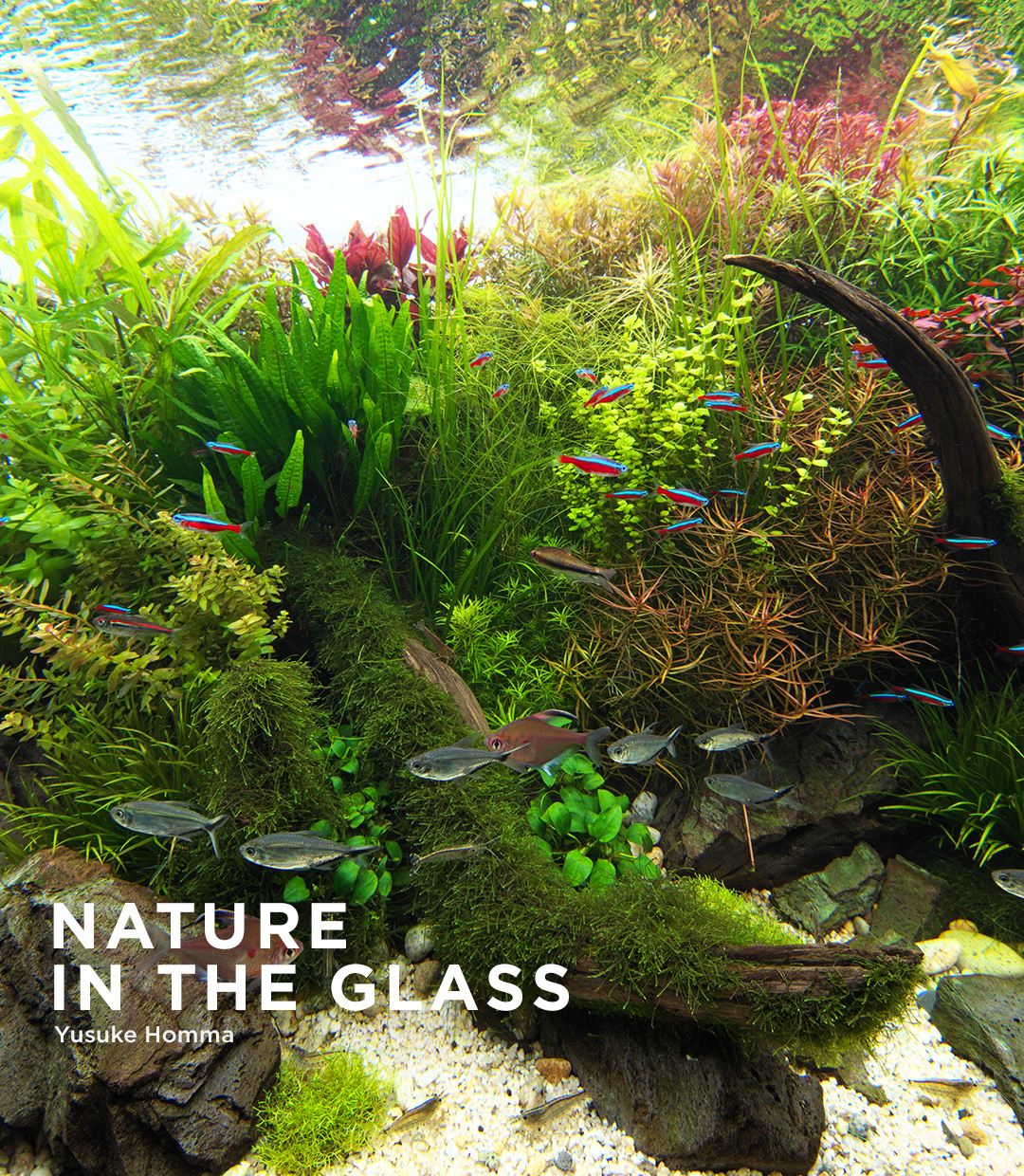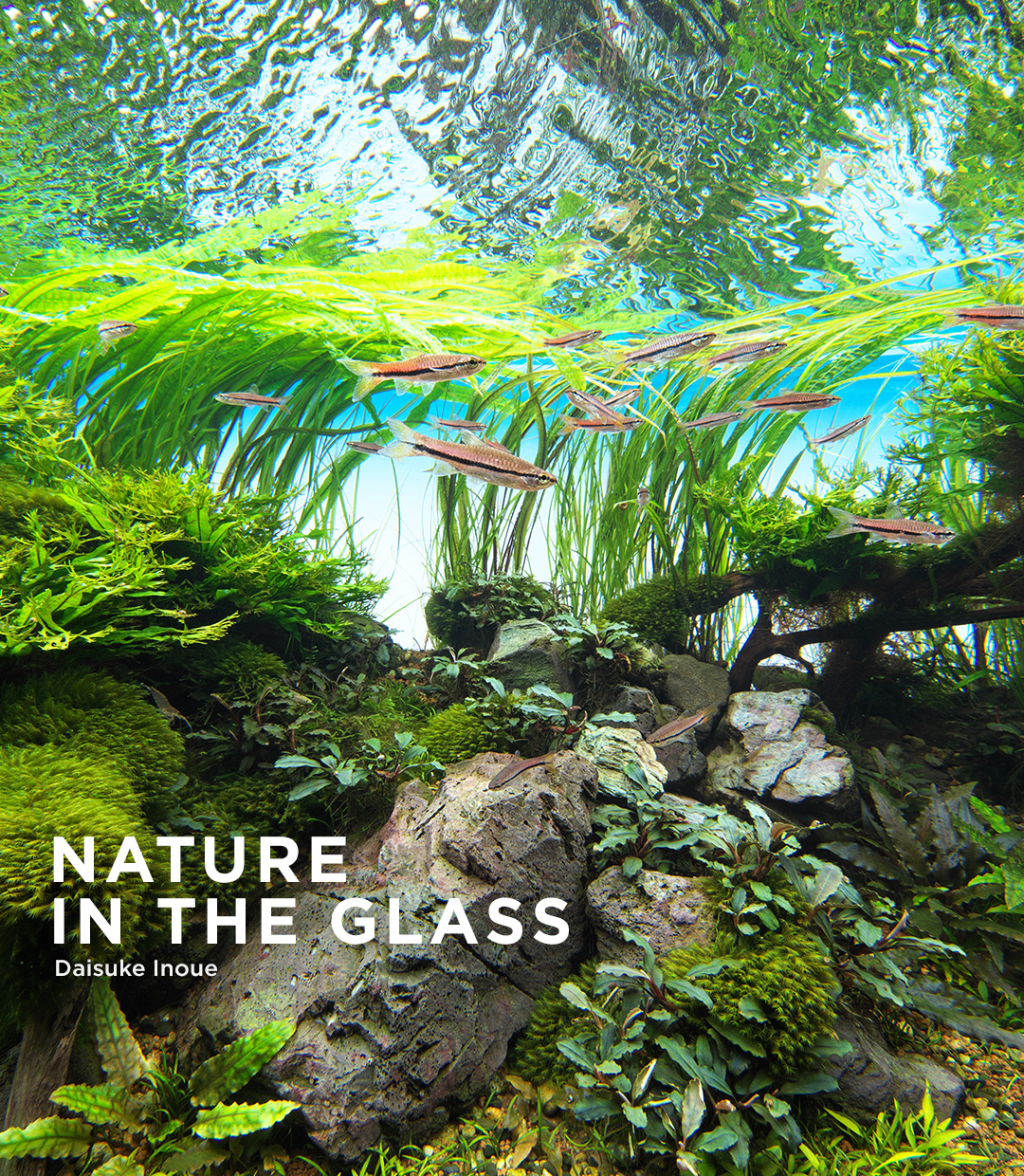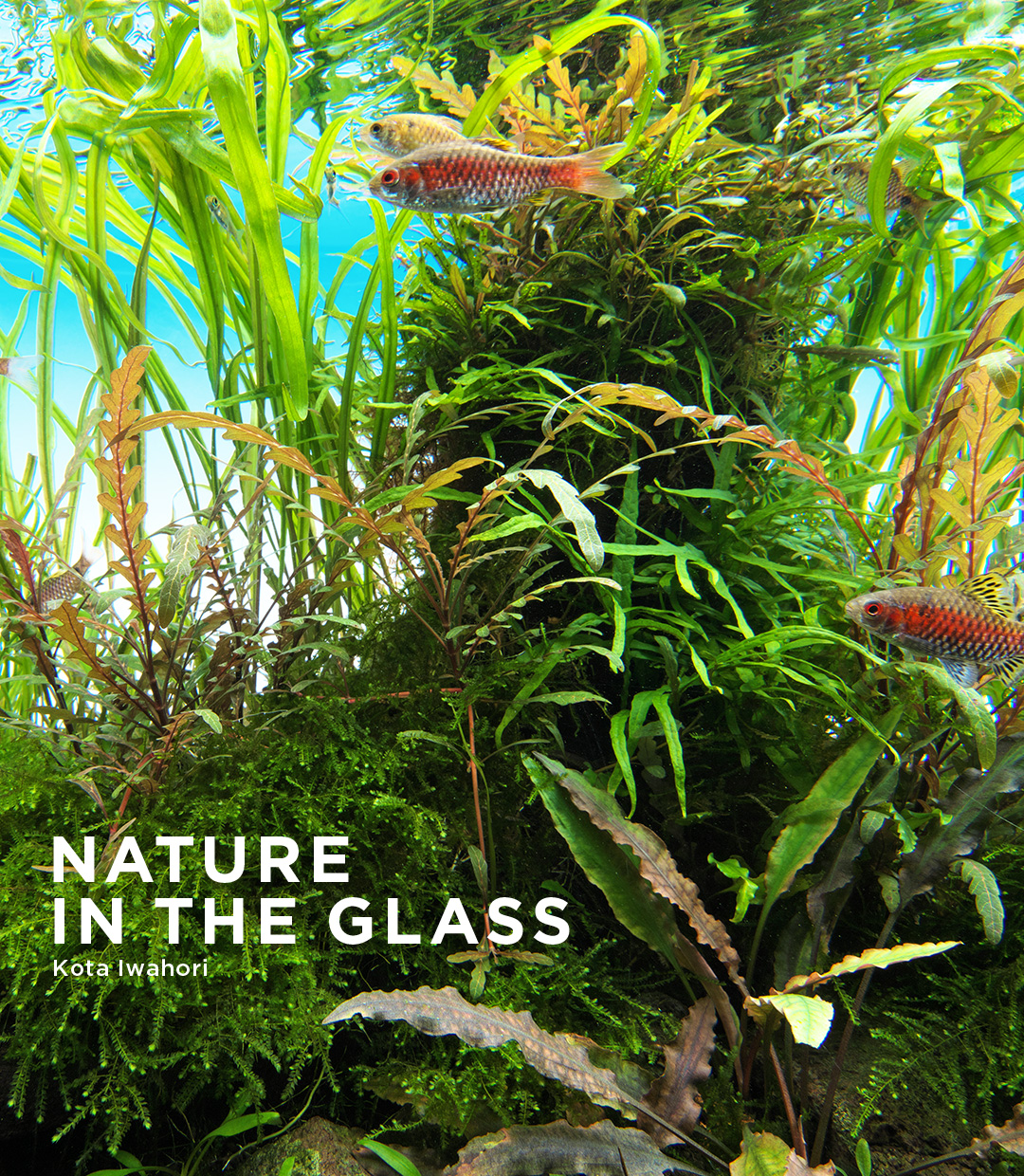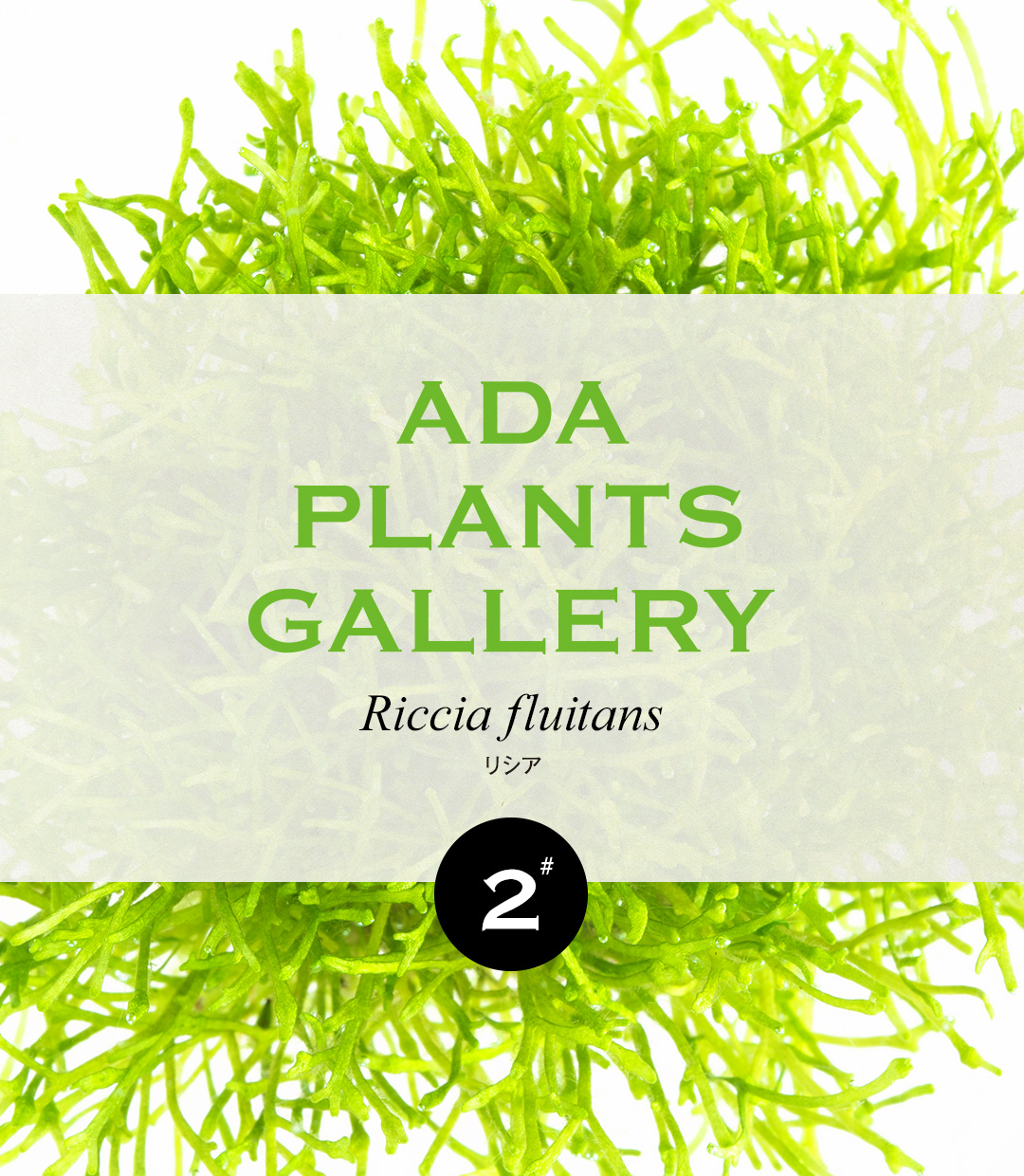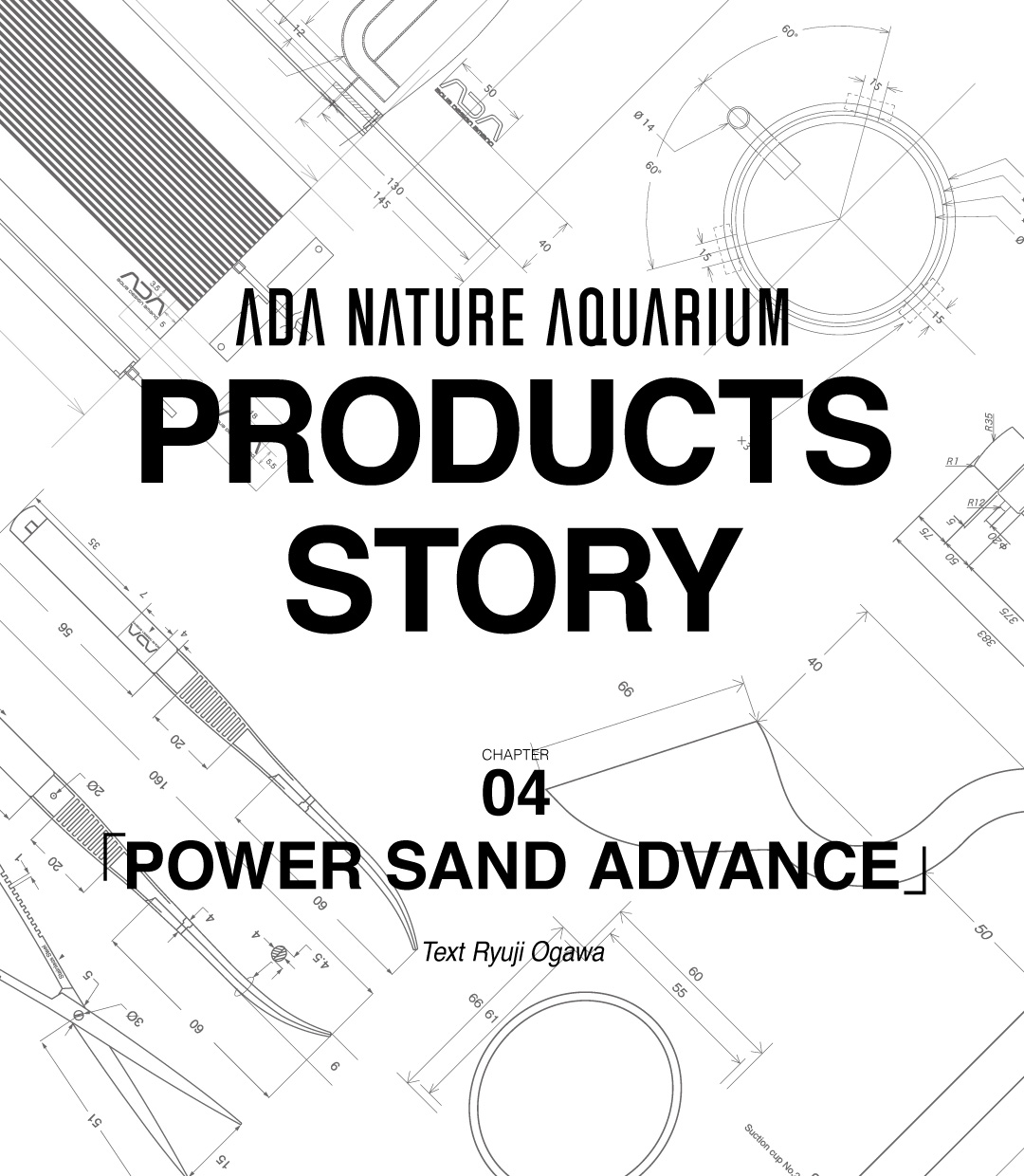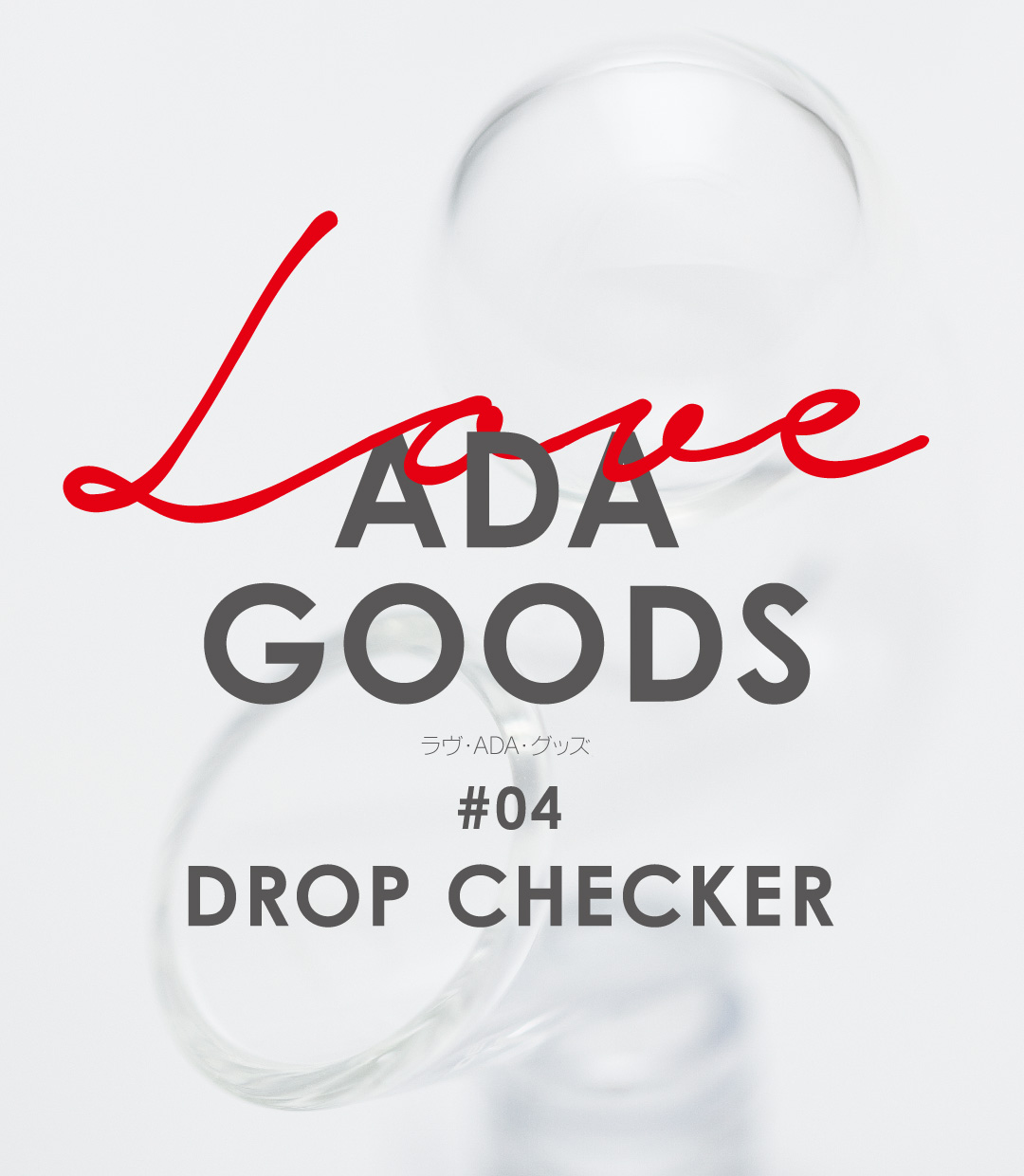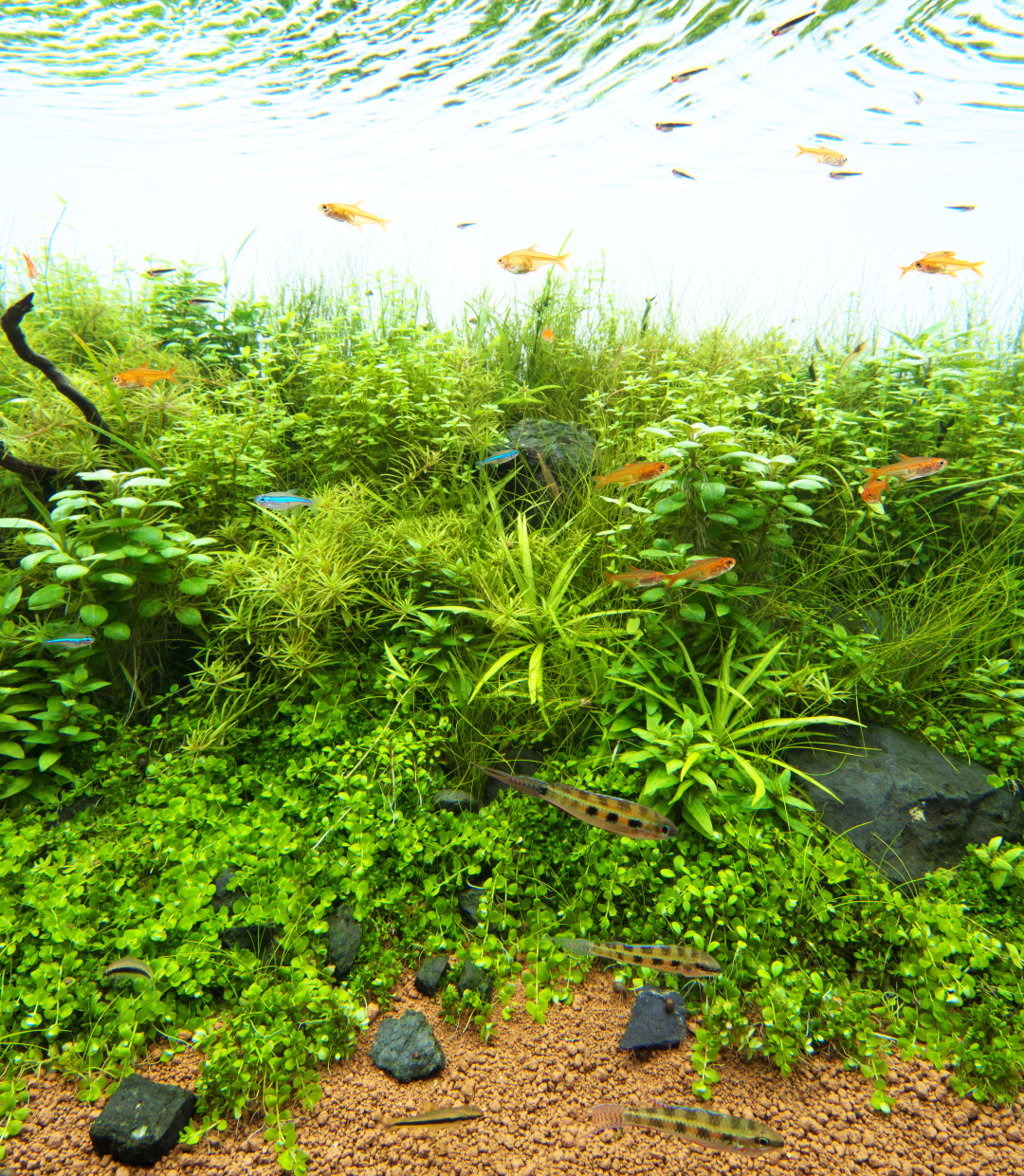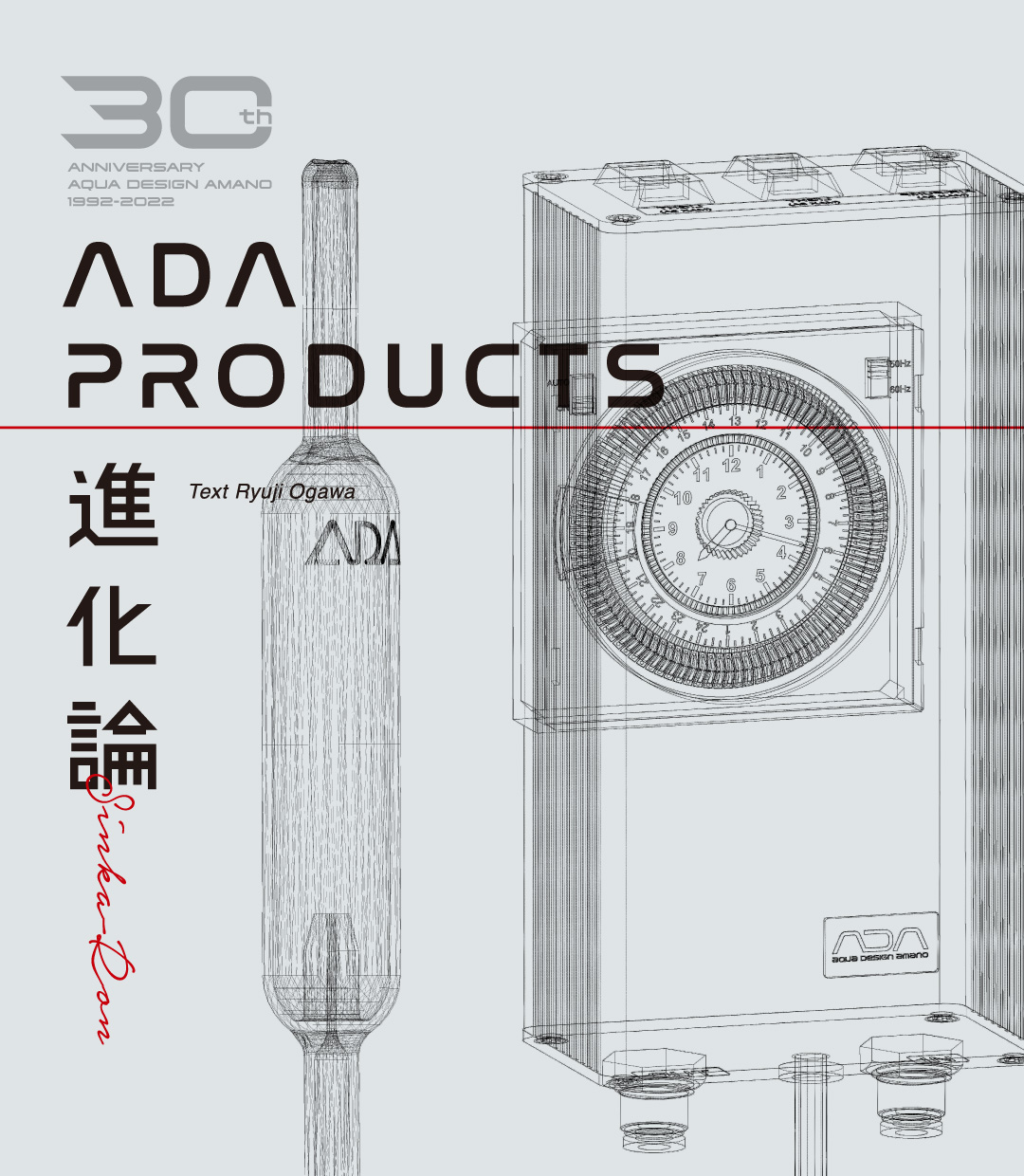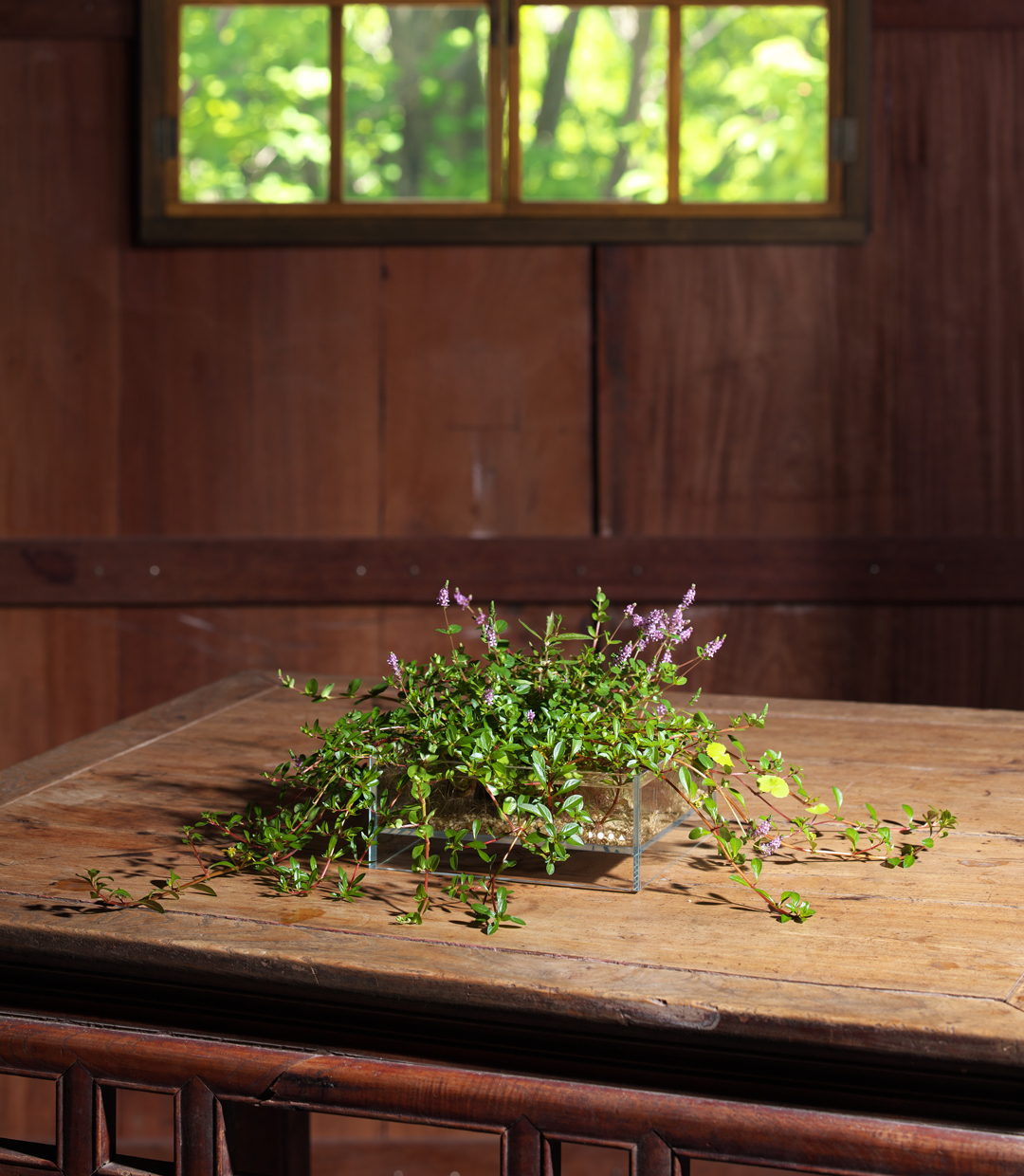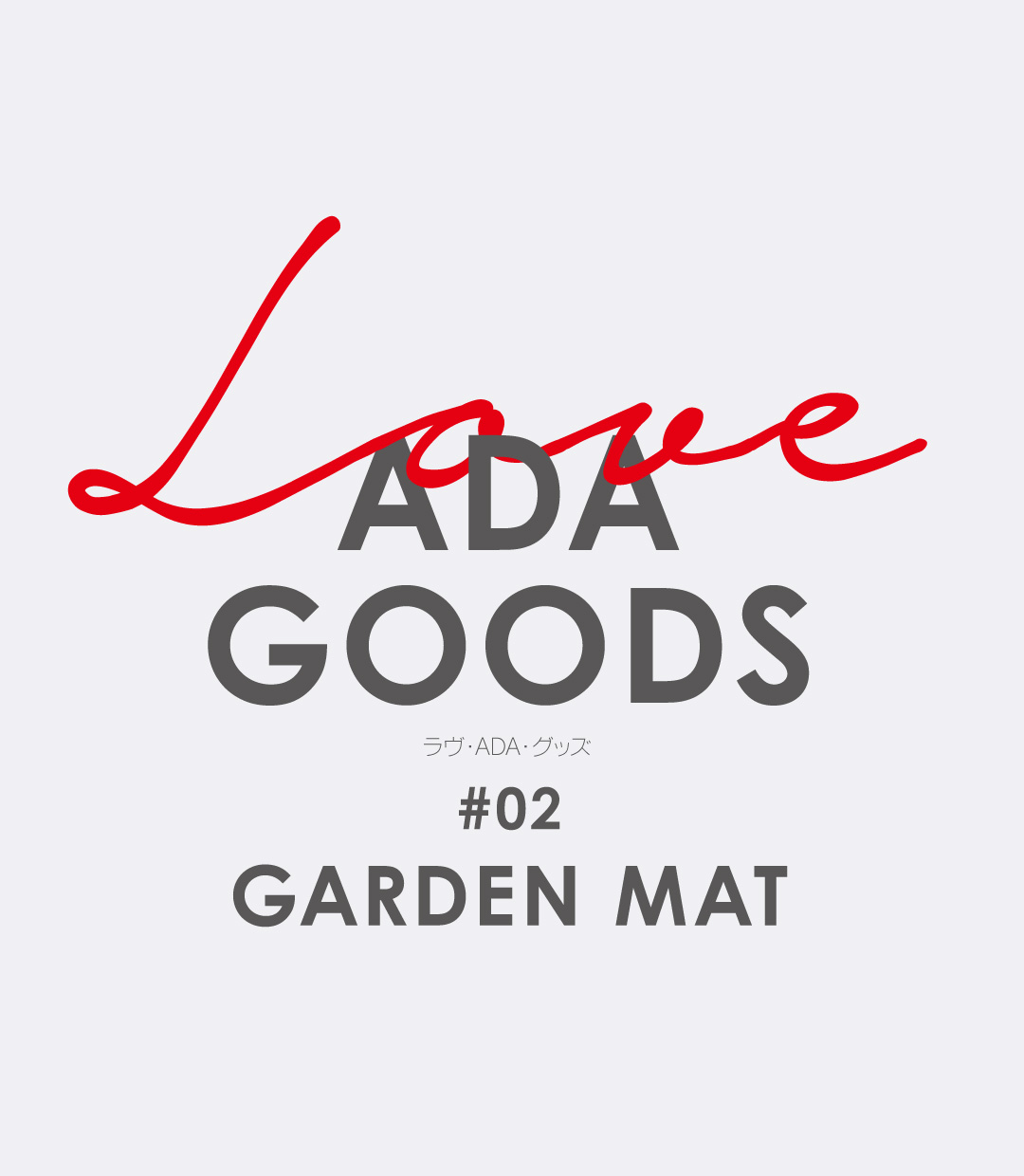NATURE IN THE GLASS ‘Dazzling Riverbed’
Expressing a sunlit riverbed at the open waterside by using Cryptocoryne with thin leaves
There are many types of Cryptocoryne, and the environments of their habitat are also diverse. Especially, many of the thin leaf types and tape types have shapes that are suitable for the underwater environment, and they grow in the light as fluttering with the flow of water. In this aquascape, Cryptocoryne is the main focus. And I envisioned a river flowing into a land near human habitation after running through a jungle. This land where aquatic plants flourish, and living creatures live, purposely expresses how blessings of nature are condensed in the aquascape.
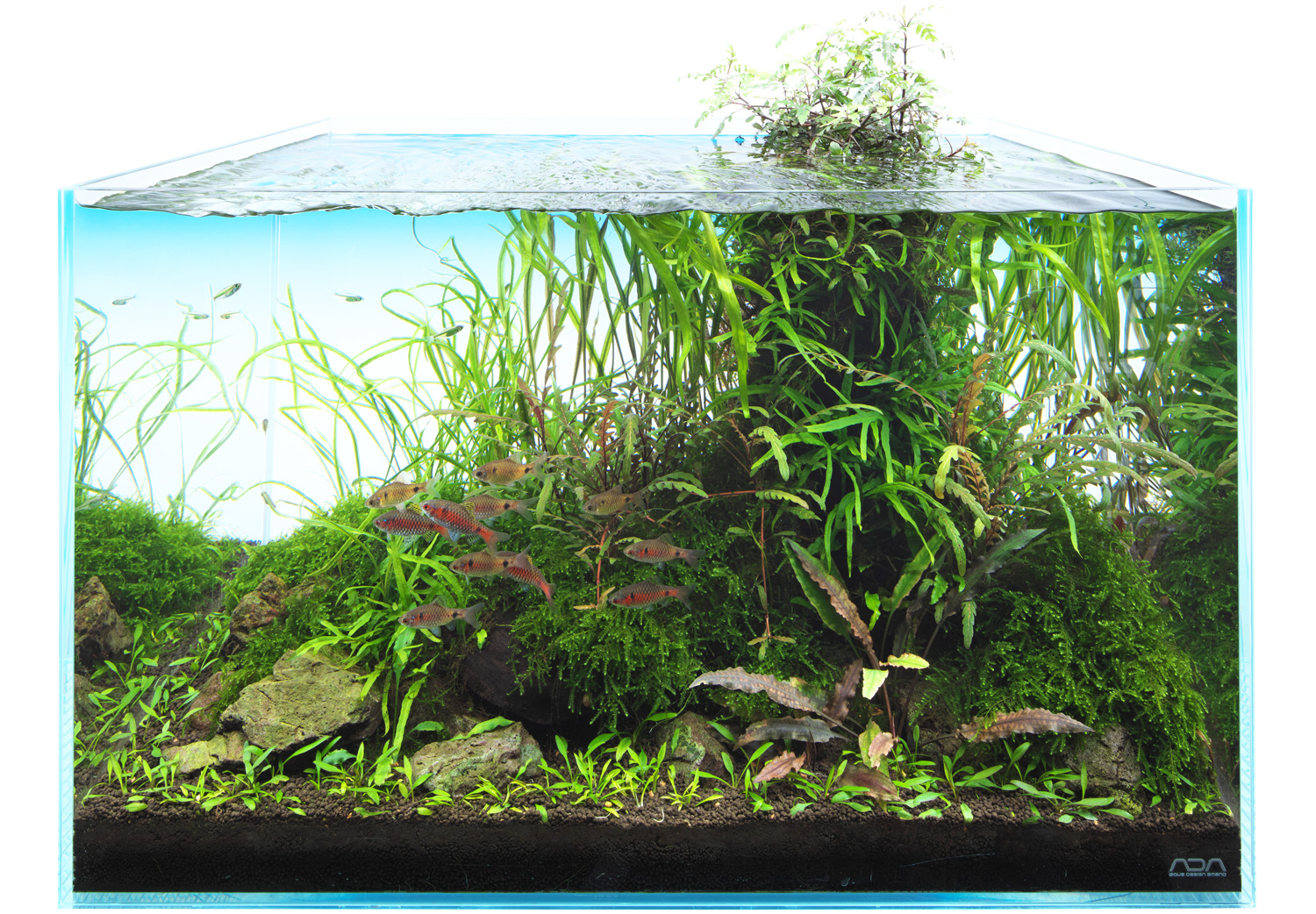
DATA
Shooting date: March 9th, 2021(ADA)
Creator: Kota Iwahori
Aquarium: Cube Garden W60×D30×H36(cm)
Lighting: Solar RGB x 1, turned on for 9 hours per day
Filter: Super Jet Filter ES-600(Bio Rio G)
Material: Driftwood, Manten Stone
Substrate: Aqua Soil – Amazonia Ver.2, Power Sand Advance S, Bacter100, Clear Super, Tourmaline BC
CO2: Pollen Glass TYPE-3, 2 bubbles per second via CO2 Glass Counter (using Tower)
Aeration: 15 hours after the light is turned off using Lily Pipe P-2
Additives: Brighty K, Green Brighty Nitrigen, Green Brighty Mineral
Water change: 1/3 once a week
Water quality: Temperature: 25ºC; pH: 6.4; TH: 50 mg/l
Plant
Cryptocoryne albida
Cryptocoryne spiralis
Cryptocoryne spiralis ‘Tiger’
Cryptocoryne spiralis var. caudigera
Cryptocoryne parva
Cryptocoryne × willisii ‘Lucens’
Cryptocoryne sp. CK
Hygrophila pinnatifida
Microsorum sp. ‘Trident’
Callicostella prabaktiana
Fish
Microdevario kubotai
Pethia padamya
Crossocheilus oblongus
Otocinclus sp.
Caridina multidentata
Shooting date: March 9th, 2021(ADA)
Creator: Kota Iwahori
Aquarium: Cube Garden W60×D30×H36(cm)
Lighting: Solar RGB x 1, turned on for 9 hours per day
Filter: Super Jet Filter ES-600(Bio Rio G)
Material: Driftwood, Manten Stone
Substrate: Aqua Soil – Amazonia Ver.2, Power Sand Advance S, Bacter100, Clear Super, Tourmaline BC
CO2: Pollen Glass TYPE-3, 2 bubbles per second via CO2 Glass Counter (using Tower)
Aeration: 15 hours after the light is turned off using Lily Pipe P-2
Additives: Brighty K, Green Brighty Nitrigen, Green Brighty Mineral
Water change: 1/3 once a week
Water quality: Temperature: 25ºC; pH: 6.4; TH: 50 mg/l
Plant
Cryptocoryne albida
Cryptocoryne spiralis
Cryptocoryne spiralis ‘Tiger’
Cryptocoryne spiralis var. caudigera
Cryptocoryne parva
Cryptocoryne × willisii ‘Lucens’
Cryptocoryne sp. CK
Hygrophila pinnatifida
Microsorum sp. ‘Trident’
Callicostella prabaktiana
Fish
Microdevario kubotai
Pethia padamya
Crossocheilus oblongus
Otocinclus sp.
Caridina multidentata
Living creatures’ drama unfolded around a fluttering cluster of Cryptocoryne
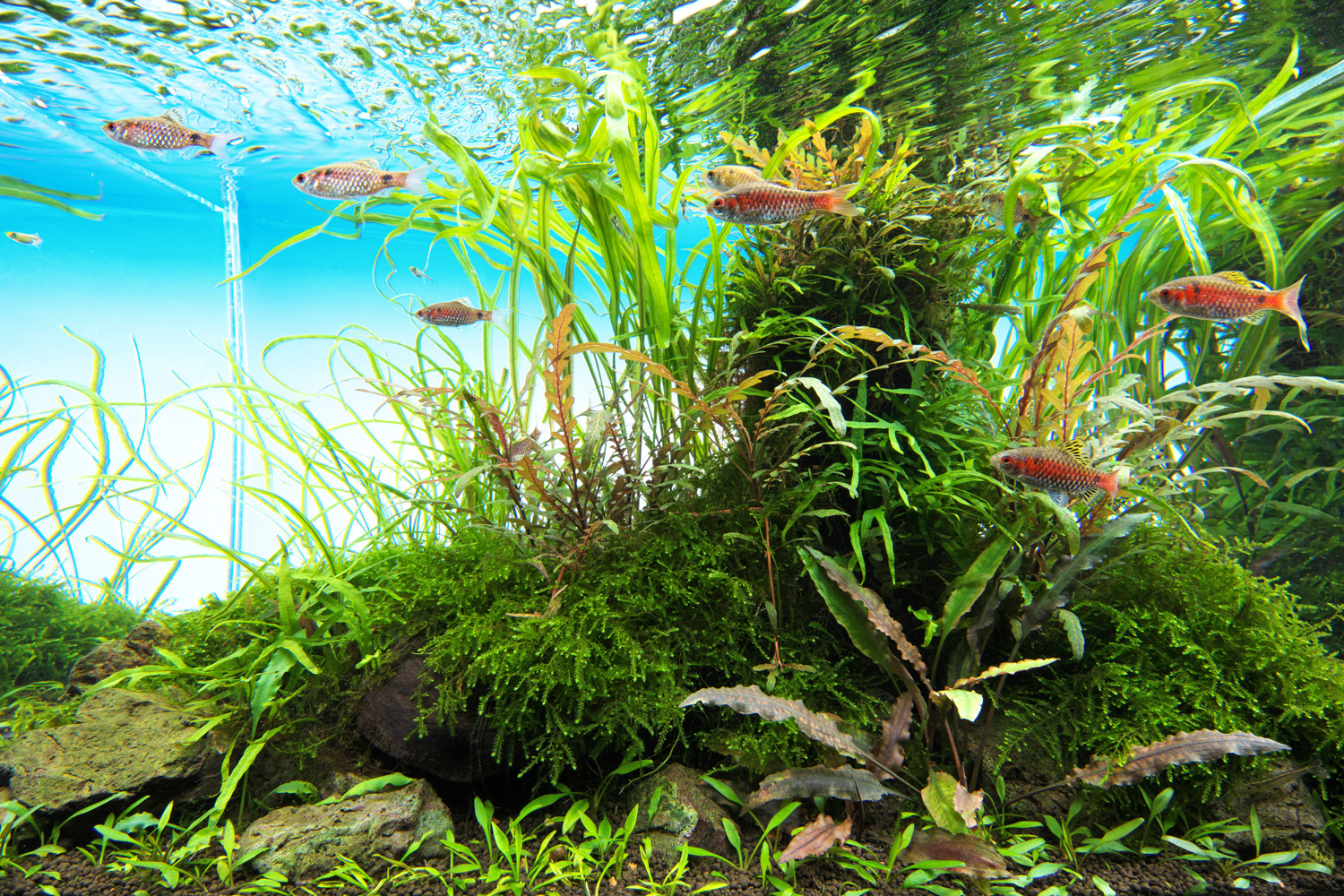
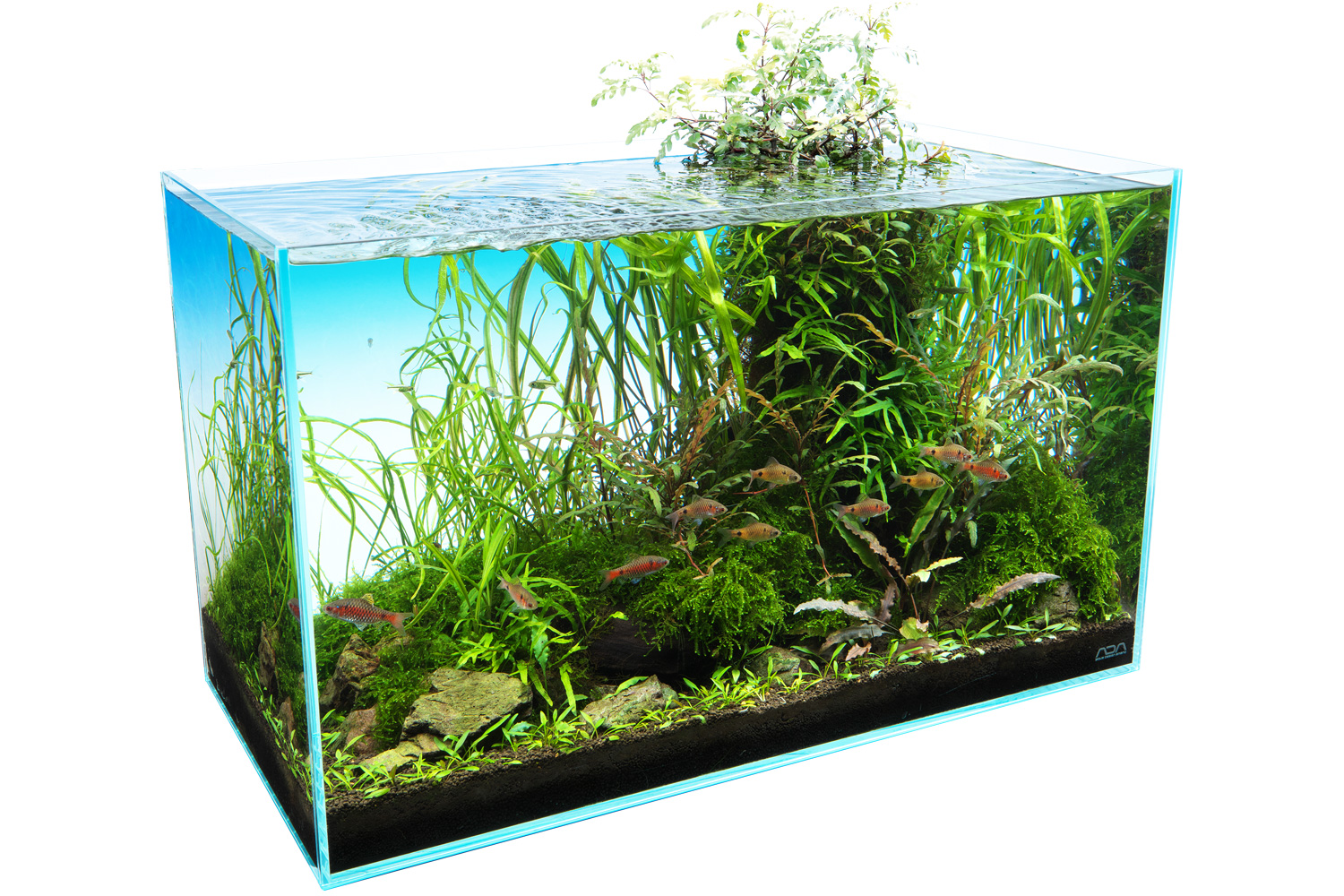
1.Properly using different types of Cryptocoryne with thin leaves
Plant them in a way that the thickness and size change from left to right. A triangular composition rising to the right is created with the Cryptocoryne in the background.
Plant them in a way that the thickness and size change from left to right. A triangular composition rising to the right is created with the Cryptocoryne in the background.
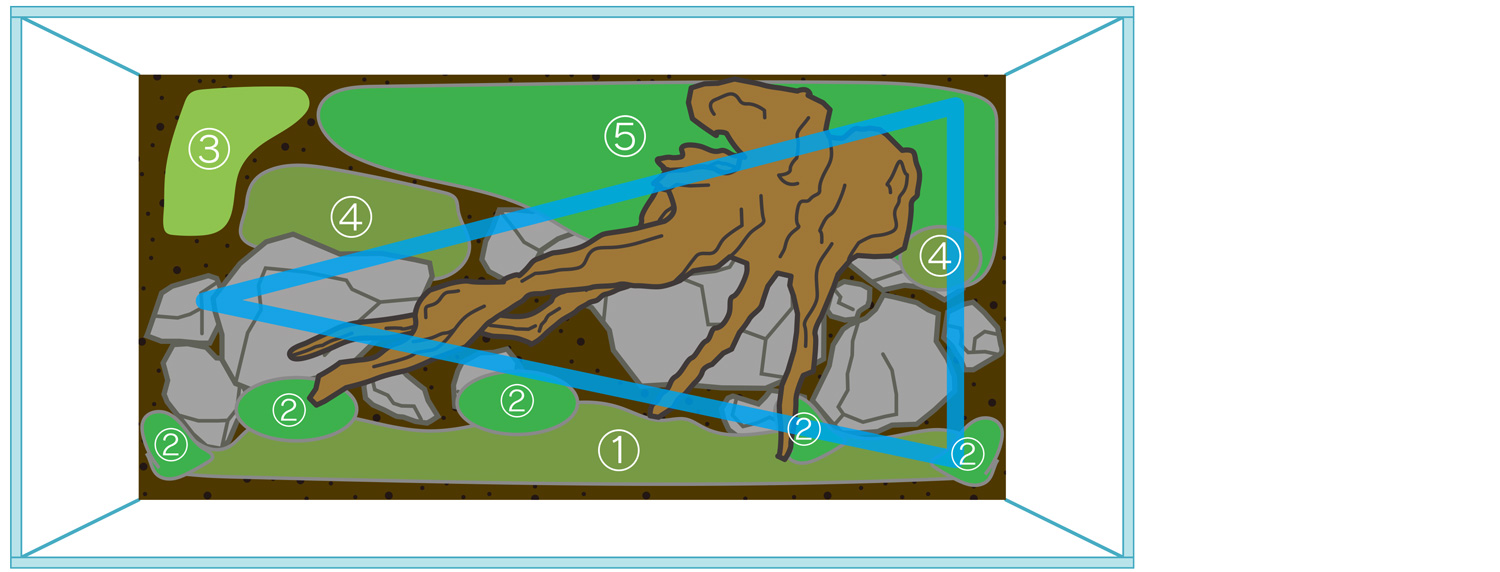
Being aware of the water flow and space
Planting space was secured in the background to spread out to the left when viewed from above. The expanse of space is created by planting short Cryptocoryne in the front on the left.
① Cry. parva
② Cry. x willisii ‘Lucens’
③ Cry. spiralis var. caudigera
④ Cry. albida
⑤ Cry. spiralis and Cry. spiralis ‘Tiger’
Planting space was secured in the background to spread out to the left when viewed from above. The expanse of space is created by planting short Cryptocoryne in the front on the left.
① Cry. parva
② Cry. x willisii ‘Lucens’
③ Cry. spiralis var. caudigera
④ Cry. albida
⑤ Cry. spiralis and Cry. spiralis ‘Tiger’

Middle : BIO Mizukusa no Mori Cryptocoryne spiralis ‘Tiger’
Right : BIO Mizukusa no Mori Cryptocoryne x willisii ‘Lucens’
2.Expressing the diversity within the genus
It is expressed with a total of 7 different species. It is a layout that only Cryptocoryne can create because of the wide variety
It is expressed with a total of 7 different species. It is a layout that only Cryptocoryne can create because of the wide variety
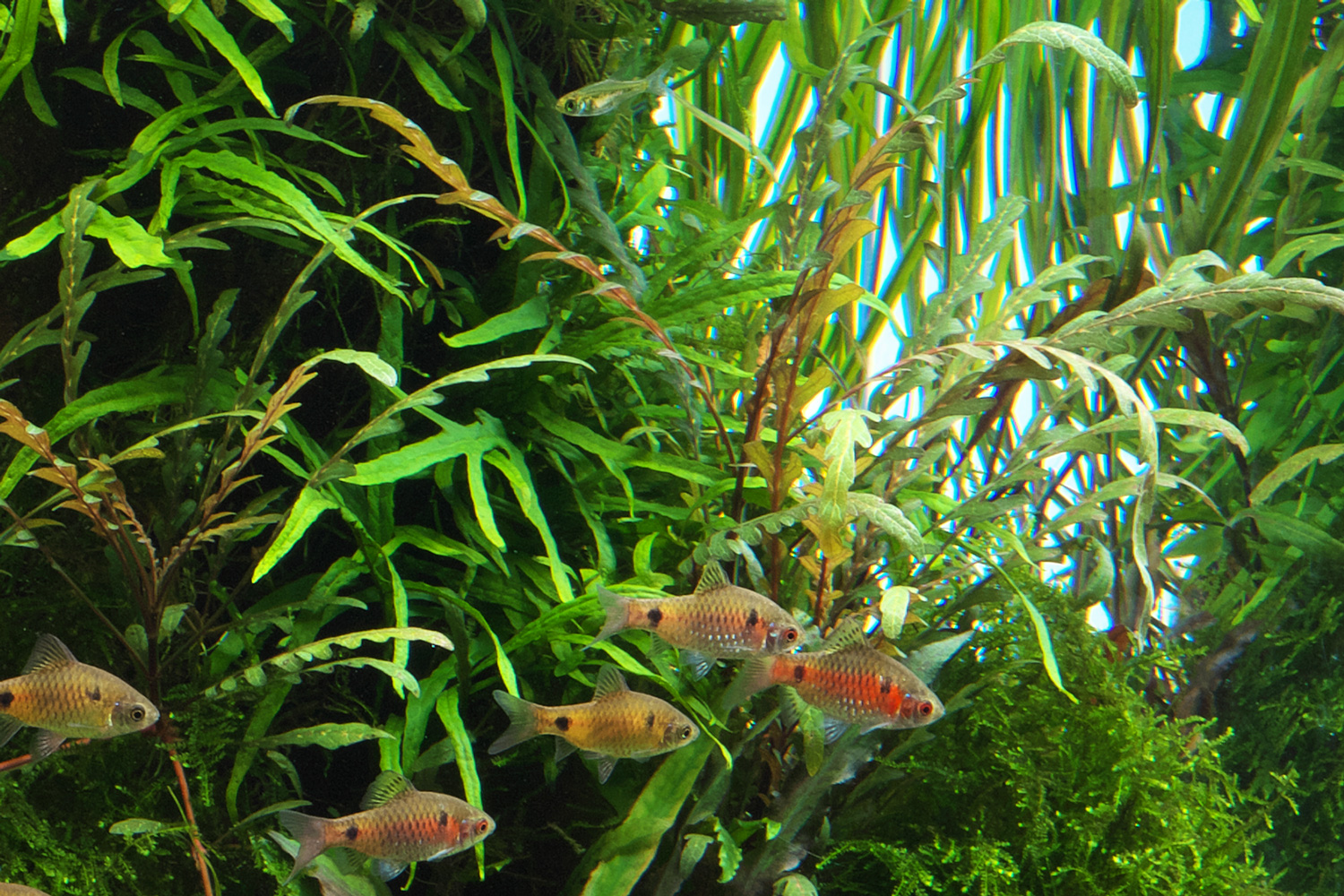
3.Add color accents
I added Hygrophila pinnatifida with a hint of red to plants mostly in green. Because I intended to create vividness in the middle layer, I wanted to bring out the red color a little more.
I added Hygrophila pinnatifida with a hint of red to plants mostly in green. Because I intended to create vividness in the middle layer, I wanted to bring out the red color a little more.
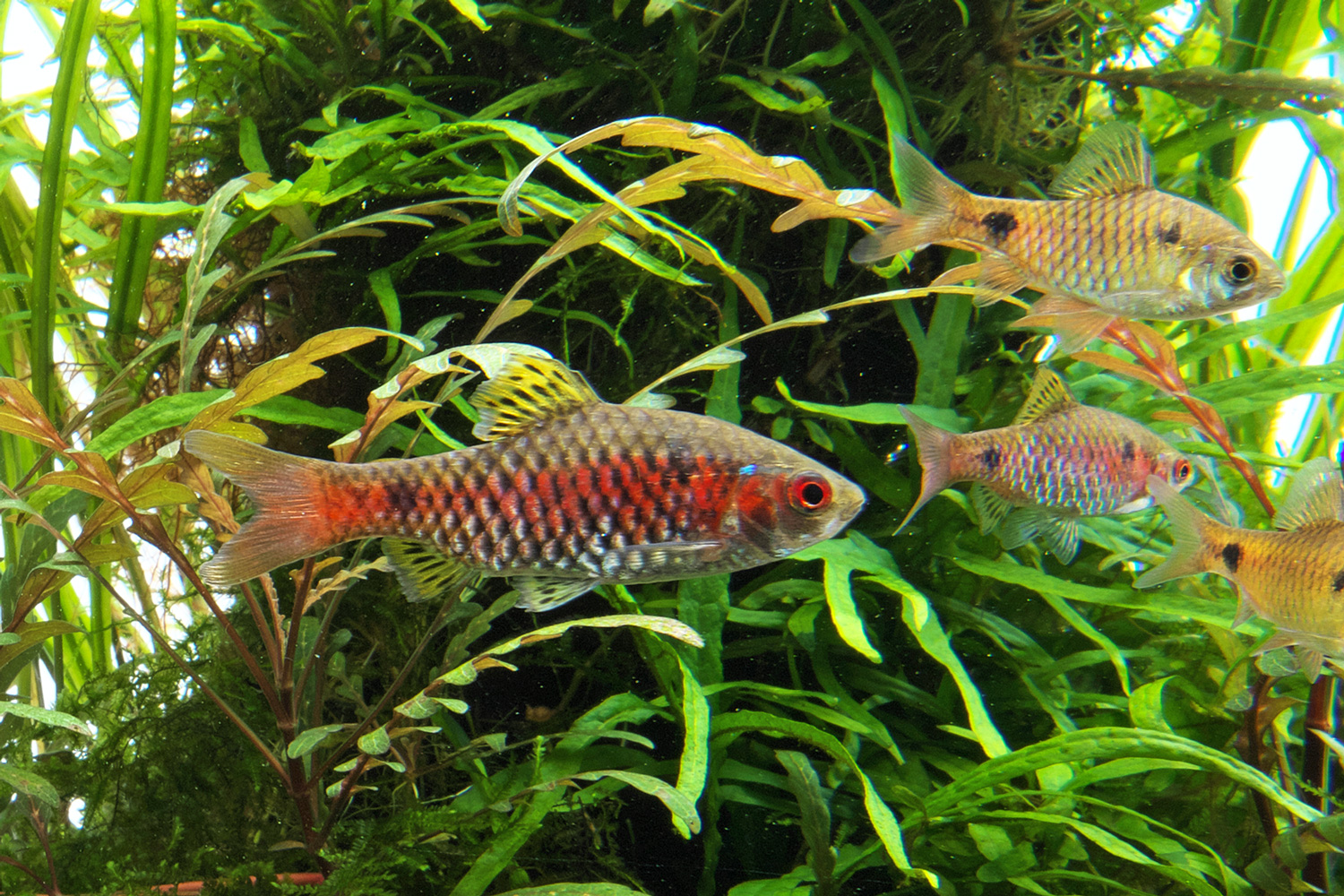
4.Territory battle in nature
I had Pethia padamya swim in the aquascape to express fish that live in a river located in the open area. The aquatic plant cluster is also a place where male fish in the beautiful nuptial coloration in red, battle each other.
I had Pethia padamya swim in the aquascape to express fish that live in a river located in the open area. The aquatic plant cluster is also a place where male fish in the beautiful nuptial coloration in red, battle each other.
How to maintain aquatic plants and use ADA products according to the growth of aquatic plants and their nature
Some ADA products can be used resourcefully in more advanced ways than standard ways. We will introduce maintenance methods for an aquascape with Cryptocoryne in various shapes planted as main plants in this layout.
【 Cryptocoryne parva 】Good rooting ability is the deciding factor
Cryptocoryne absorbs nutrients mainly from its roots. How fast Cryptocoryne develops the roots after planting and takes root in the substrate, affects the subsequent growth. For that reason, I used Power Sand Advance which can recreate a better substrate environment with BC powder formulation. I planted BIO Mizukusa no Mori Cryptocoryne parva and Cryptocoryne x willisii ‘Lucens’ in the foreground. But Cry. parva is easy to come out of the substrate until it takes new root. It is important to avoid such a situation.
Cryptocoryne absorbs nutrients mainly from its roots. How fast Cryptocoryne develops the roots after planting and takes root in the substrate, affects the subsequent growth. For that reason, I used Power Sand Advance which can recreate a better substrate environment with BC powder formulation. I planted BIO Mizukusa no Mori Cryptocoryne parva and Cryptocoryne x willisii ‘Lucens’ in the foreground. But Cry. parva is easy to come out of the substrate until it takes new root. It is important to avoid such a situation.
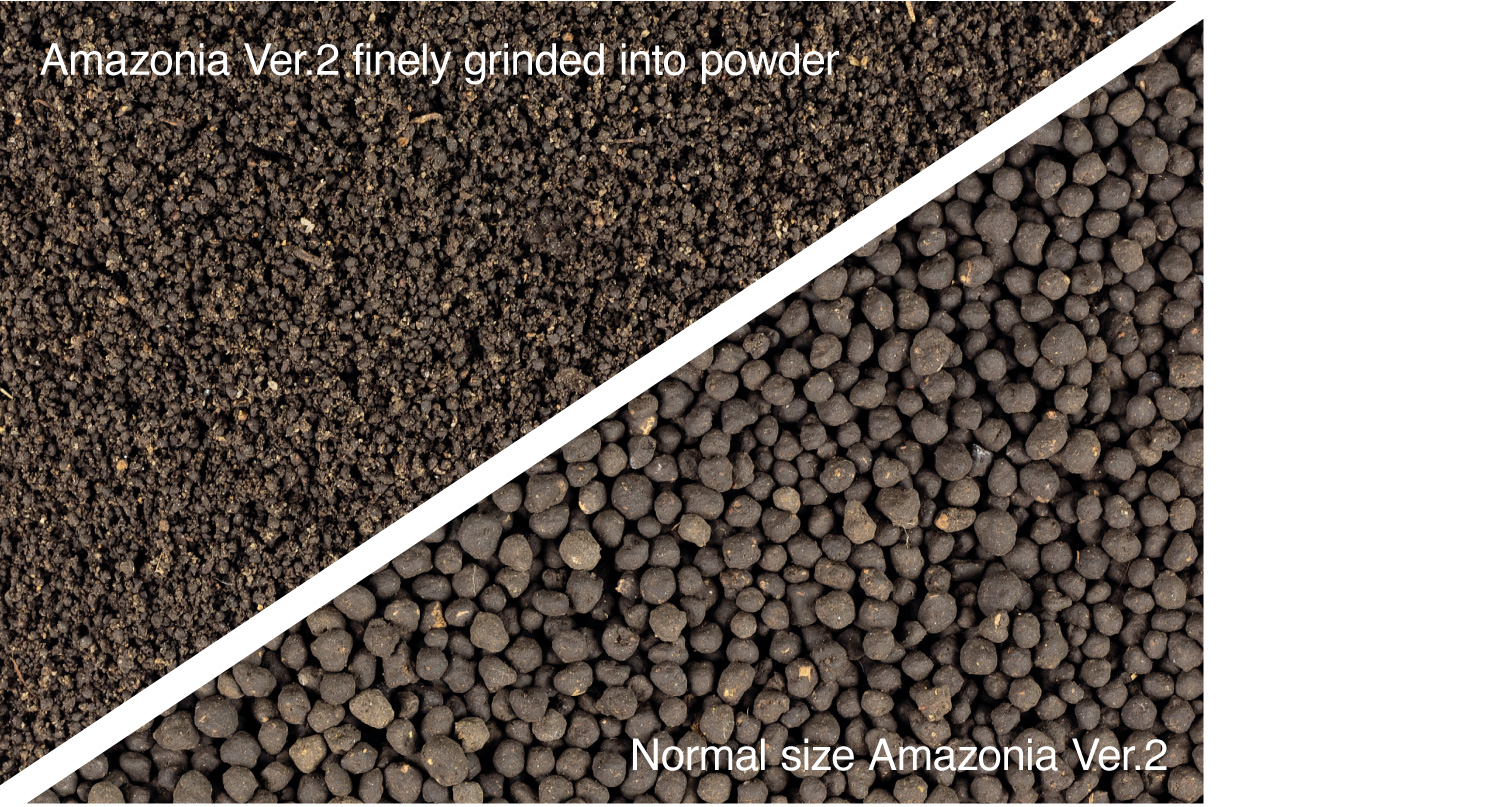
Aqua Soil – Amazonia Ver.2 has the characteristic of being less turbid. By taking advantage of this characteristic, I tried grinding the Amazonia Ver.2 into fine powder and spread it on the upper layer of the substrate. This moderately filled gaps, and good rooting was seen without having exposed roots.
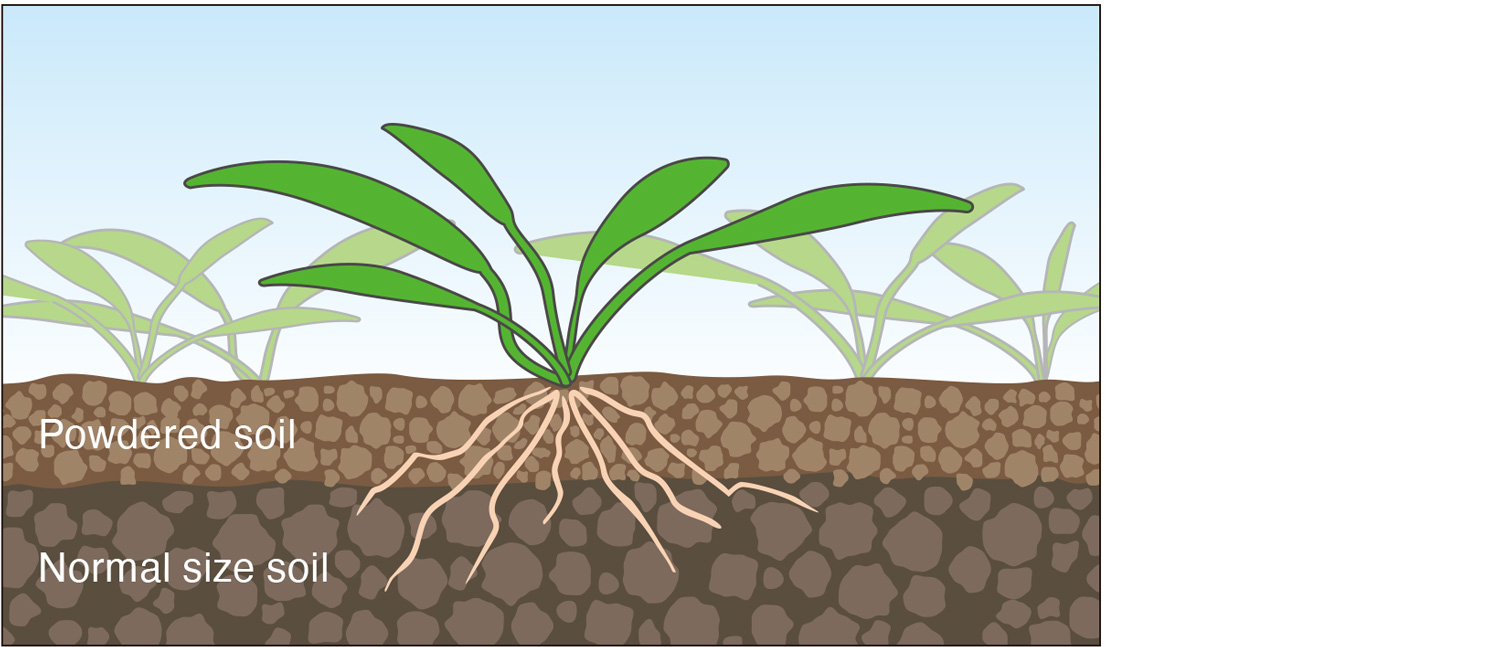
Powdery Amazonia Ver.2 moderately fills gaps around the roots, and it becomes easier to take root because buoyancy can be controlled.
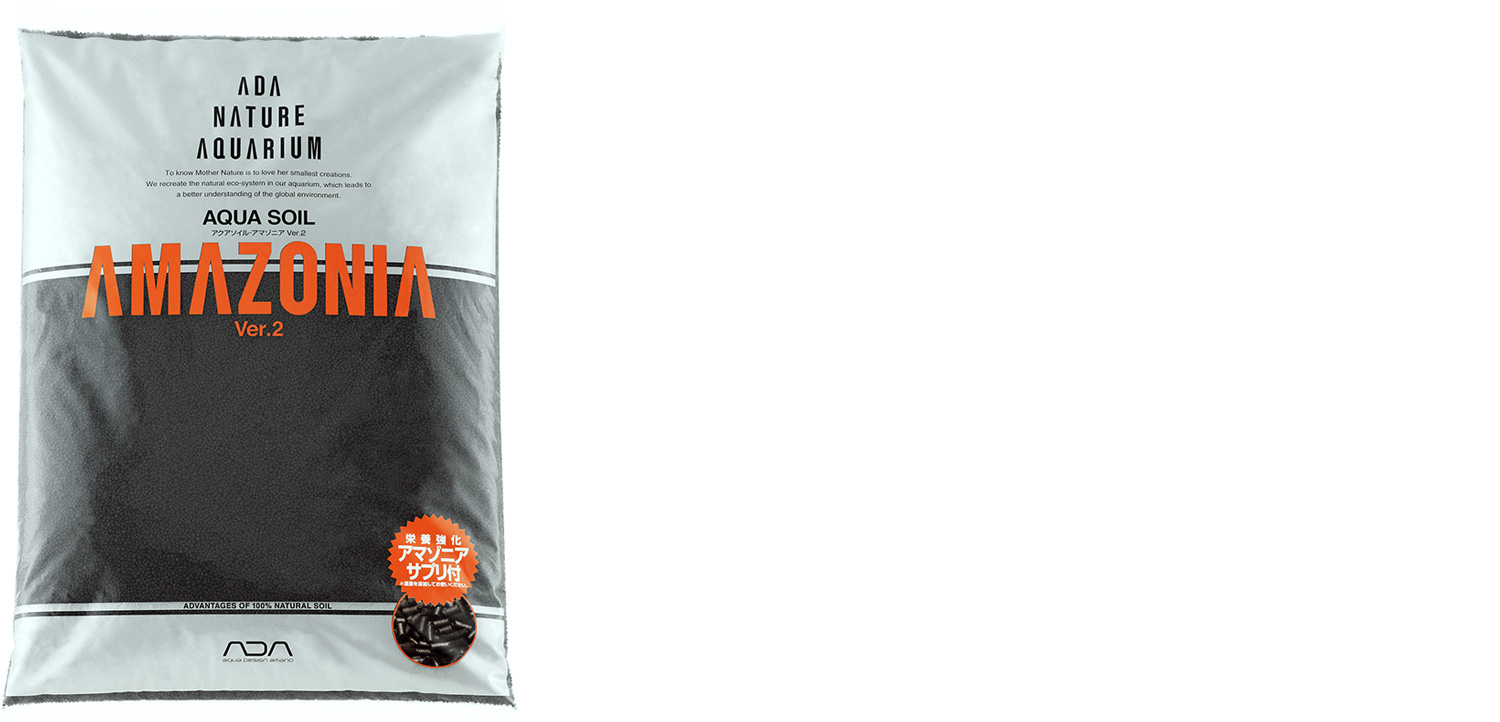
Aqua Soil – Amazonia Ver.2
With Aqua Soil – Amazonia Ver.2, algae hardly grow at the initial setup stage, and it is easy to control nutrients with the Green Brighty series.
With Aqua Soil – Amazonia Ver.2, algae hardly grow at the initial setup stage, and it is easy to control nutrients with the Green Brighty series.
【 Cryptocoryne 】Regular additional supply of nutrients
When aquatic plants including Cryptocoryne actively absorb nutrients from their roots, the substrate lacks nutrients. As a result, the leaf color may become lighter, or the growth rate may slow down. When those symptoms are found, adding solid nutrients is effective.
When aquatic plants including Cryptocoryne actively absorb nutrients from their roots, the substrate lacks nutrients. As a result, the leaf color may become lighter, or the growth rate may slow down. When those symptoms are found, adding solid nutrients is effective.
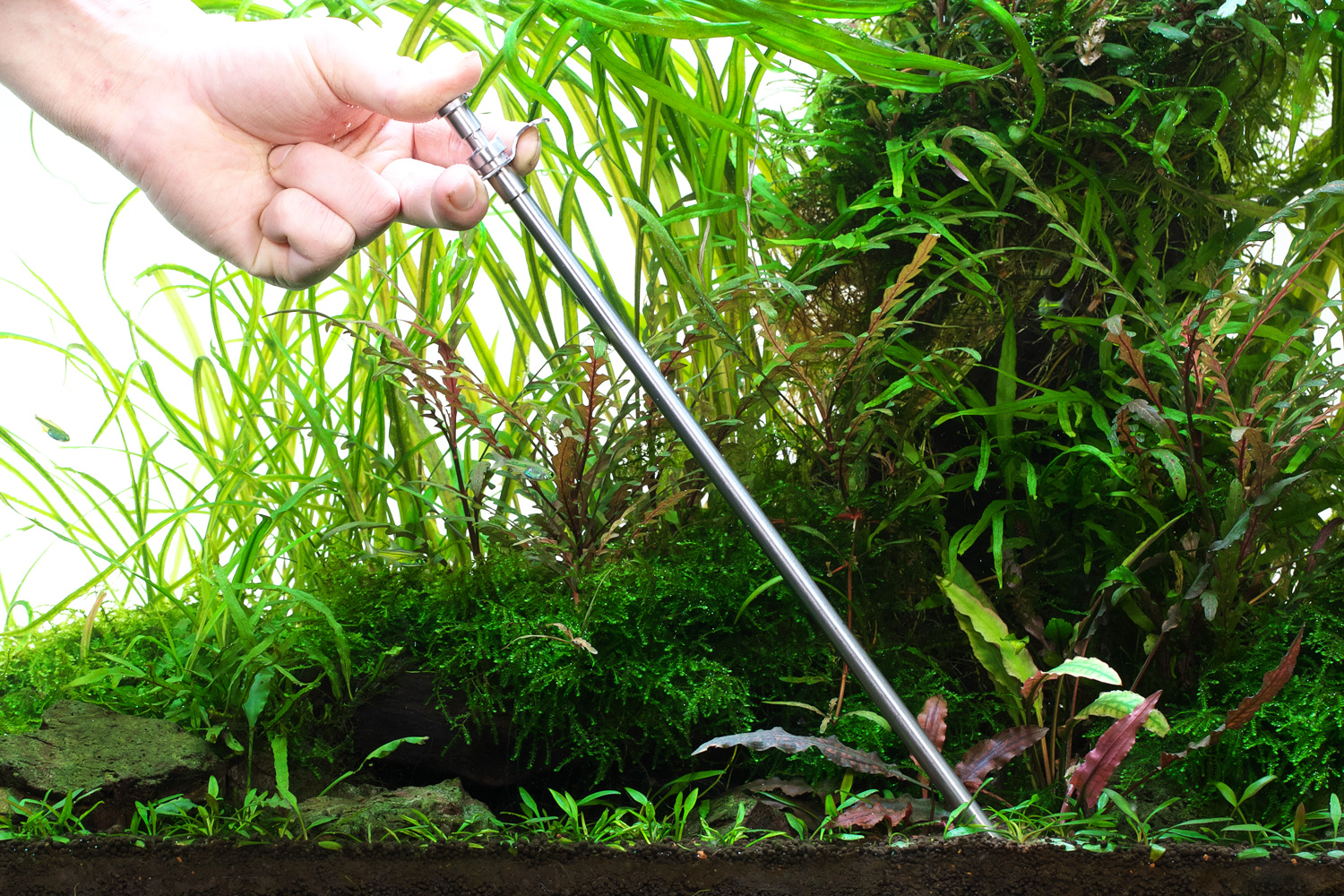
When supplying nitrogen and iron by regularly adding Bottom Plus, nutrients in the substrate can be retained, and the growth can be promoted. When the Aqua Soil where Bottom Plus will be inserted, is not thick enough, by breaking Bottom Plus in half to adjust the size, they can be buried accurately.
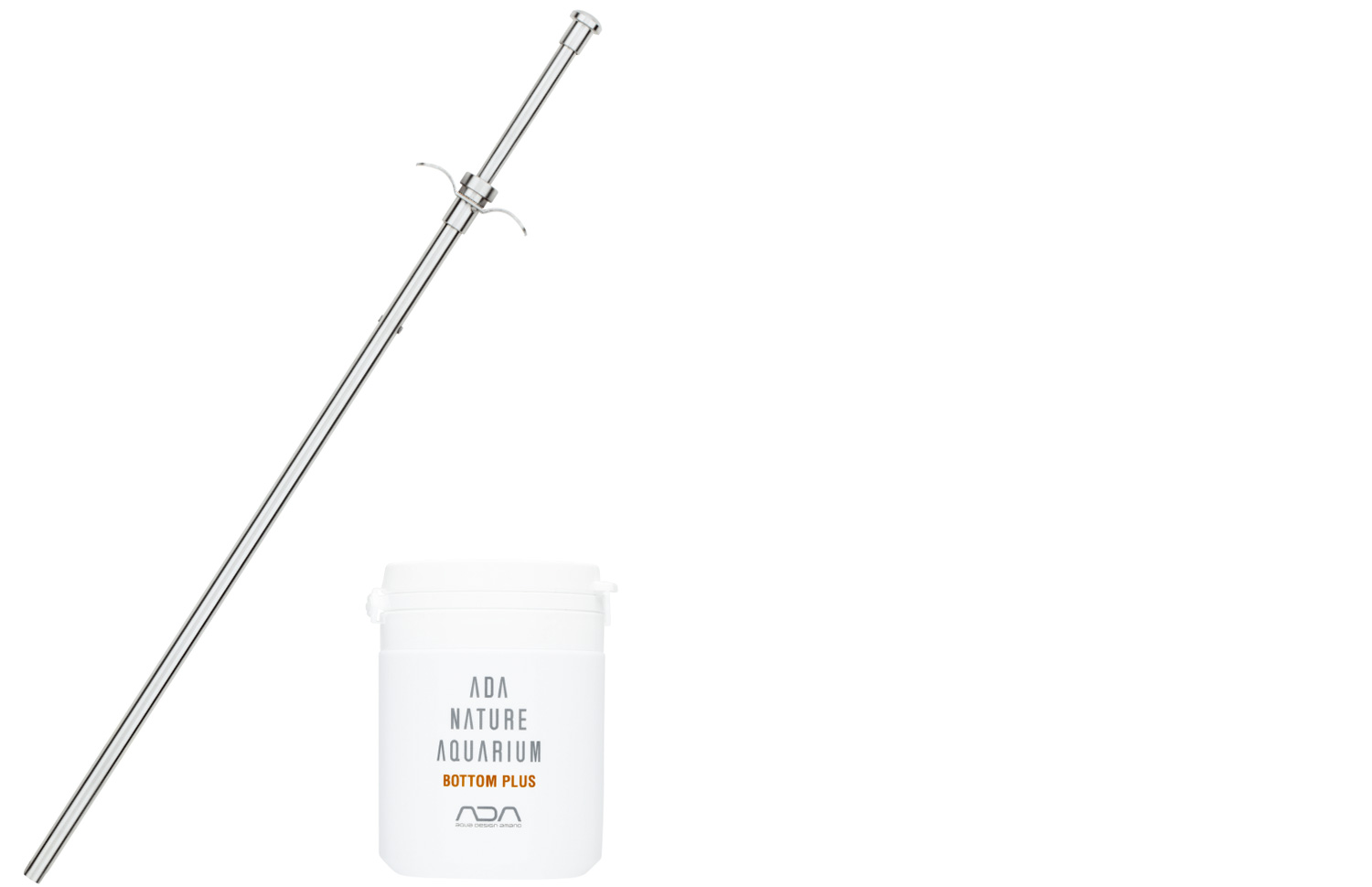
Bottom Release / Bottom Plus
Leave a 15cm space between each Bottom Plus as a guide, and deeply insert it 2 to 3cm away from the base of aquatic plants.
Leave a 15cm space between each Bottom Plus as a guide, and deeply insert it 2 to 3cm away from the base of aquatic plants.
【Cryptocoryne spiralis 】Clarify the flow of water
Cryptocoryne spiralis in its natural habitat flutters with the flow of water in a place exposed to sunlight while inhabiting there. In this aquascape where this species is planted in the background, by making the leaf density lighter to create a gradation from right to left, the flow of water going through from the dark place to bright space in the light, is expressed.
Cryptocoryne spiralis in its natural habitat flutters with the flow of water in a place exposed to sunlight while inhabiting there. In this aquascape where this species is planted in the background, by making the leaf density lighter to create a gradation from right to left, the flow of water going through from the dark place to bright space in the light, is expressed.
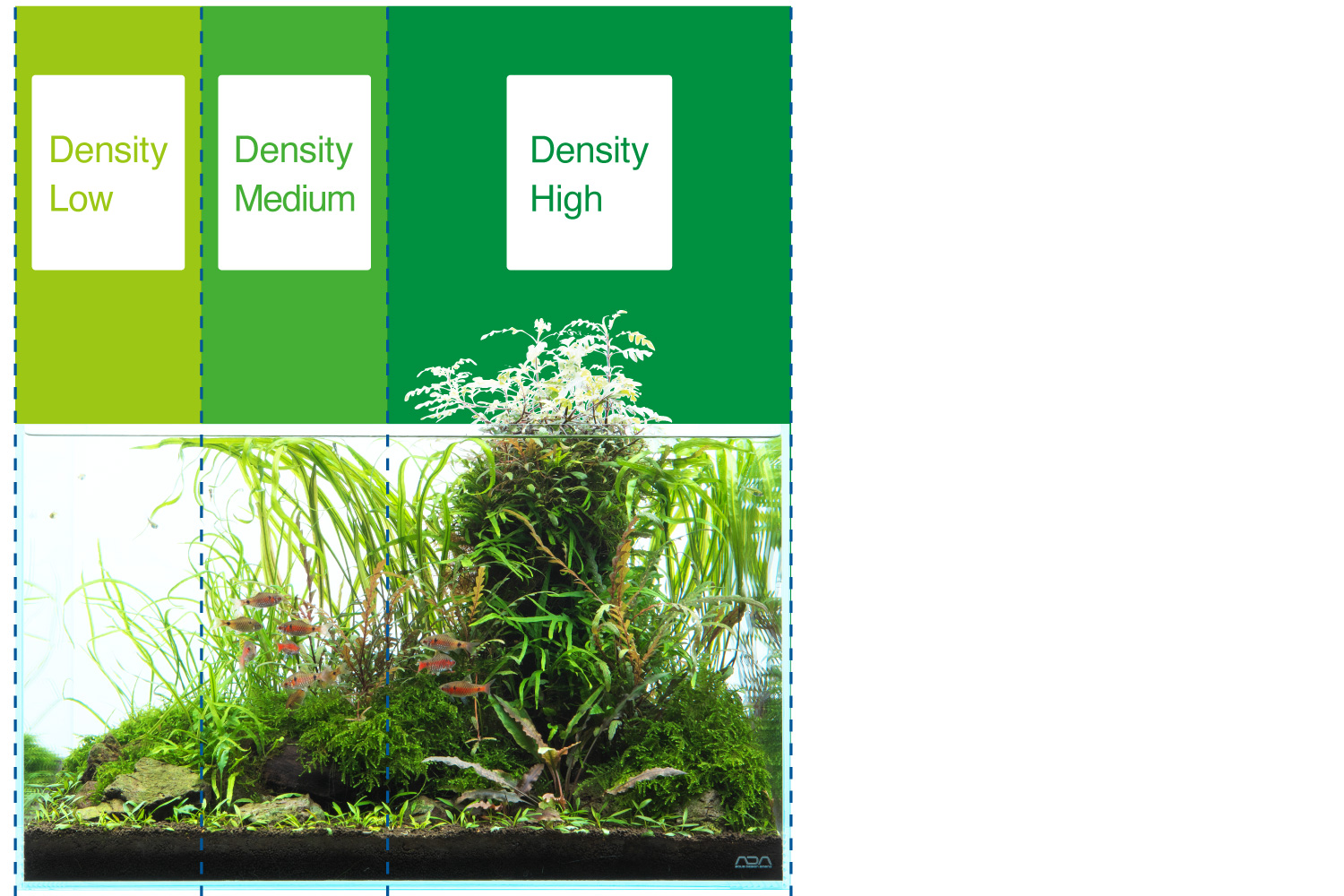
To control the leaf density precisely, it is important to pick excess leaves and old leaves. I used Pro Scissors S Curve type in order to accurately cut them from the base of their petioles. Using scissors with long handles to cut dense long leaves prevents us from touching surrounding aquatic plants and causing extra damages.
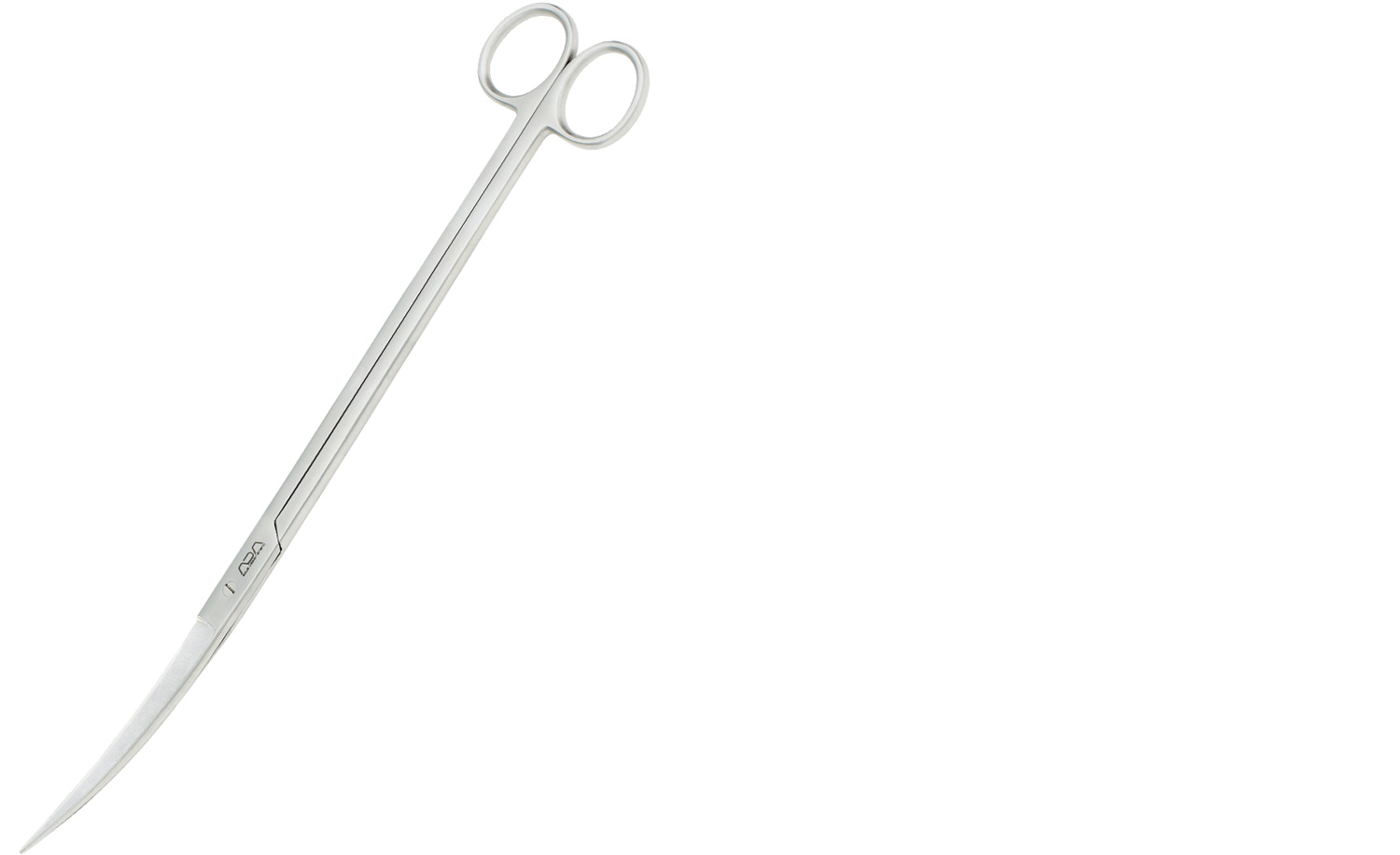
Pro Scissors S Curve type
With their curved blades, target leaves can be definitely caught even in the dense aquatic plants.
With their curved blades, target leaves can be definitely caught even in the dense aquatic plants.
【Callicostella prabaktiana 】Giving sharpness
Moss family is one of the most important aquatic plants that can make us feel the passage of time and elegance in aquascapes. Because Callicostella prabaktiana used in this aquascape has the characteristic of crawling on top of each other while growing, I was able to express the way that Callicostella prabaktiana crawls out toward a big space by maintaining the density with differences in height.
Moss family is one of the most important aquatic plants that can make us feel the passage of time and elegance in aquascapes. Because Callicostella prabaktiana used in this aquascape has the characteristic of crawling on top of each other while growing, I was able to express the way that Callicostella prabaktiana crawls out toward a big space by maintaining the density with differences in height.
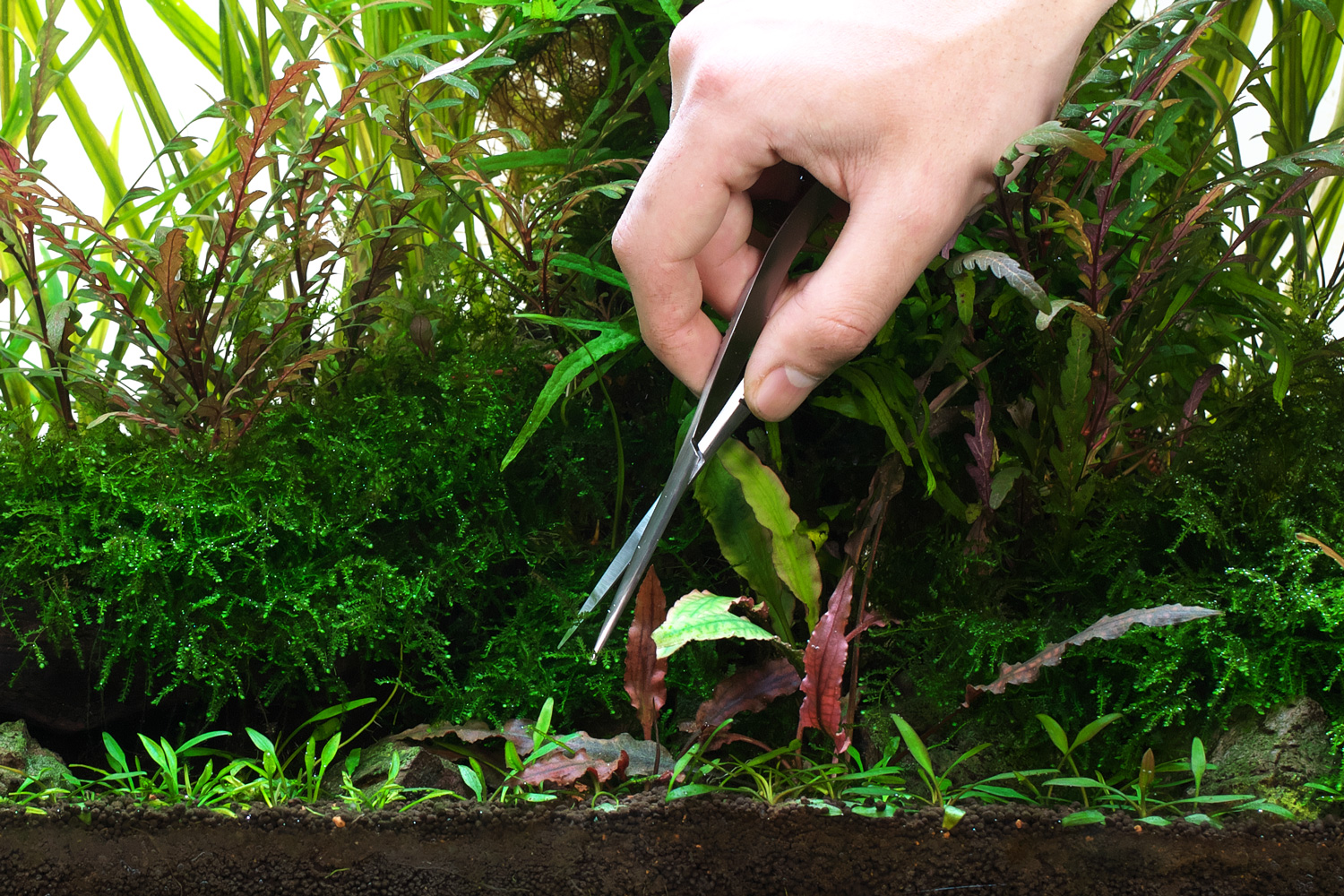
Because Callicostella prabaktiana tends to develop its leaves at a slower pace than Taxiphyllum barbieri, it is important to pick partially and thin them out to bring the best out of the leaves that are growing from below. For this maintenance task, it works out well if you use Pro Scissors Spring Straight type that enable us to make fine adjustments easily at hand, and cut leaves as pecking at them.
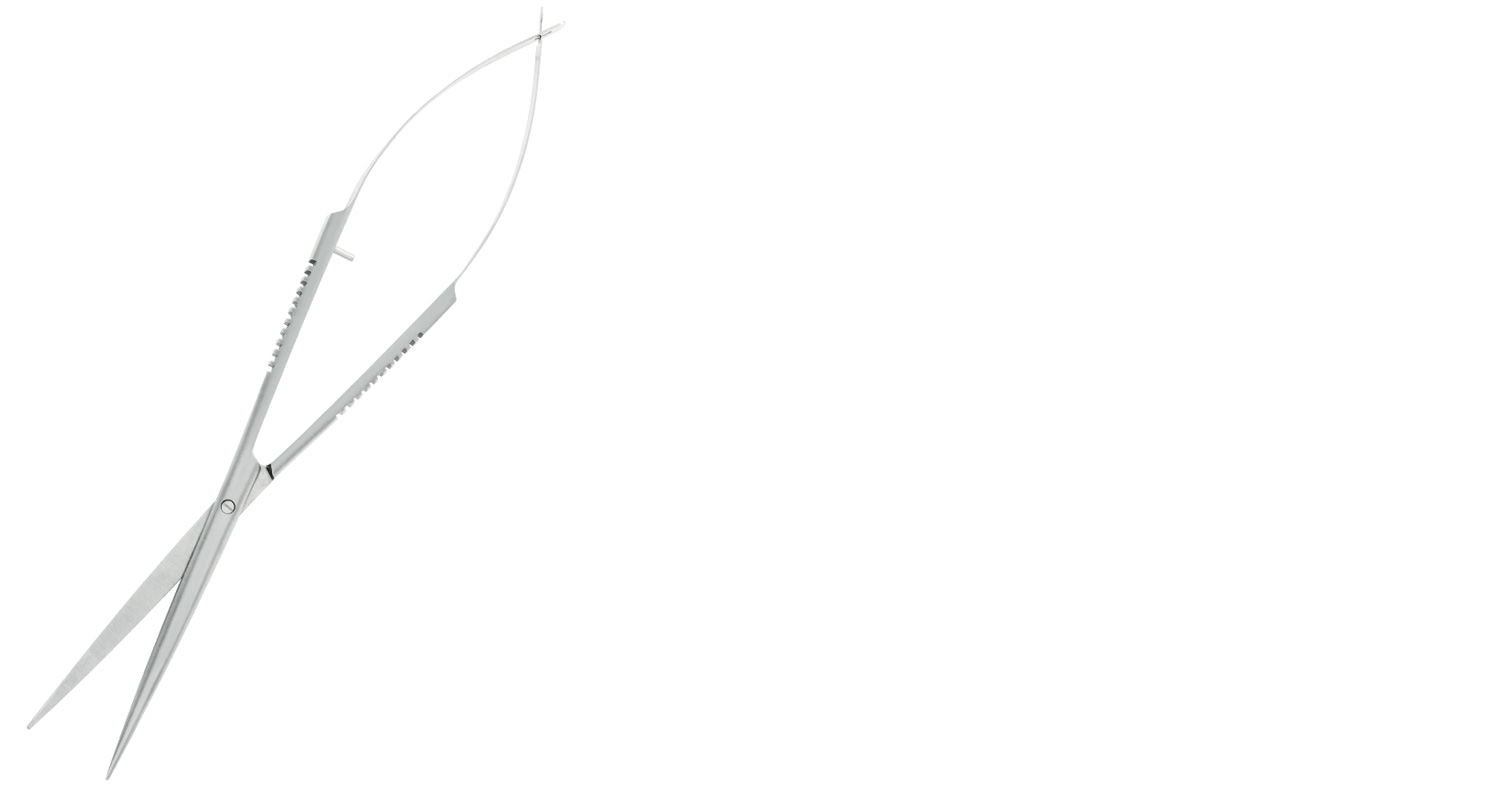
Pro Scissors Spring Straight type
They are suitable for detailed work because they are easy to handle, and the blades can be closed with a little force.
They are suitable for detailed work because they are easy to handle, and the blades can be closed with a little force.
![[ STYLE OF EPIPHYTIC PLANTS ] Effective use of epiphytic aquatic plants in layout scenes](https://www.adana.co.jp/wp-content/uploads/sites/3/2024/04/ep_img_ogp.jpg)
